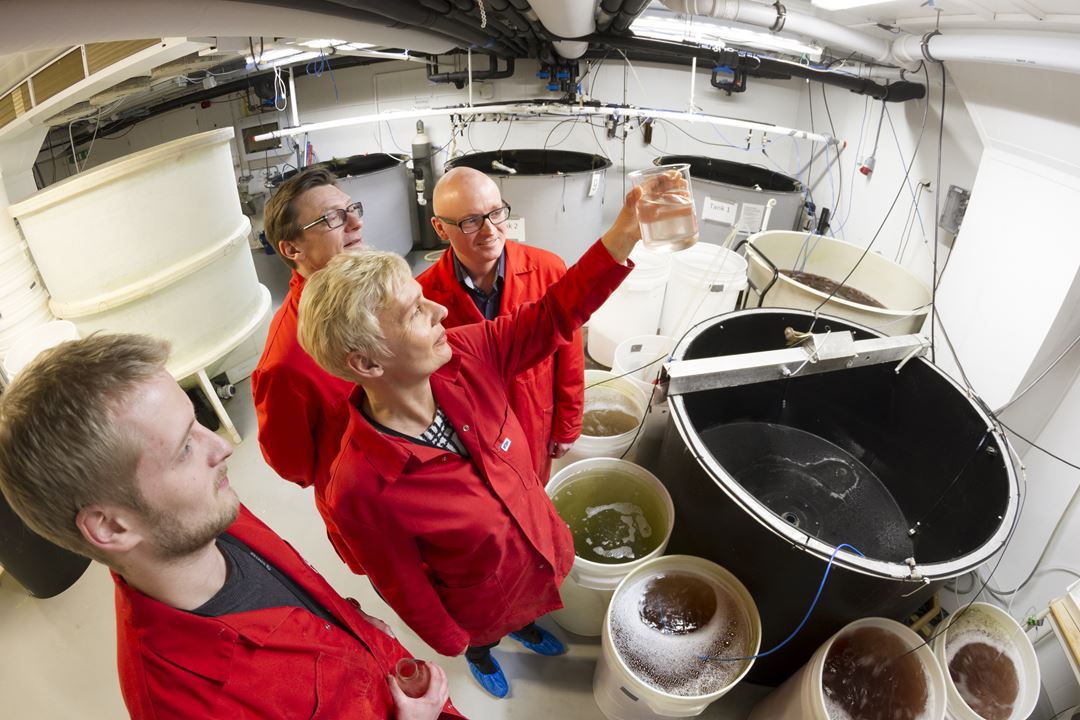With the establishment of the Norwegian company
C-Feed, small copepods are destined to become a new Norwegian industrial product. For several years now, SINTEF has been cultivating this tiny crustacean species and serving it as baby-food to new-born fry of a several marine species. And with great success, too.
SINTEF’s commercialisation company Sinvent envisages an annual global market for this type of feed of almost NOK 2 billion (Euro 244 million) in the course of about ten years. The feed should make it possible to farm a number of species that no-one has managed to bring up on an industrial scale until now.
“Many people all over the world have tried to farm new fish species, but without success, and it is usually the fry stage that has been the problem. We believe that our feed can provide a stable supply of fry of new species for cultivation, for both fish farming and the aquarium industry,” says research director Gunvor Øie at SINTEF Fisheries and Aquaculture.
(Text continues below the picture)

|
|
These tiny copepods are the “baby food” that SINTEF is cultivating as feed for the tuna fry. Photo: SINTEF/Jan Ove Evjemo |
Promising results
|
C-Feed AS
|
In laboratory trials of the feed, SINTEF’s aquaculture scientists doubled the survival rates of lobster fry that had hatched out in aquaculture tanks. They are also the first group in the world who have managed to bring up large numbers of well-developed tuna fry.
“We have also obtained promising laboratory-scale results with fry of halibut, cod and ballan wrasse, the last of these being a species that “cleans” salmon by removing lice from their skin. The next step will be to try out the feed on squid and on members of the grouper family, which are highly prized (and priced) in the East. Given the level of interest in the market for the species we have already studied and those we are about to start on, we have complete faith in the viability of the production plant we are setting up,” says Øie.
Money from seed investment fund
The majority owner of C-Feed is SINTEF’s recently established seed investment fund SINTEF Venture IV, in which the European Investment Fund (IEF) and Sparebank1 SMN have invested capital, together with SINTEF.
The fund was established in January 2014, and C-Feed is the first investment to be done by SINTEF Venture IV.
Eggs and hatched copepods
C-Feed is starting life in rented premises at SINTEF Fisheries and Aquaculture in Trondheim, and will begin by relying on personnel hired in from this Institute.
The company will supply the fry-feed in the form of eggs and hatched copepods.
“C-Feed will gradually scale up production here, and if demand increases as we hope it will, we may set up factories in other countries in the course of time,” says investment manager Jostein Bjøndal of Sinvent, SINTEF’s commercialisation company.
By Svein Tønseth
|
The SINTEF Venture IV seed investment fund
|

|

